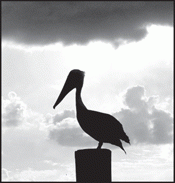“Crazy River”: A Journey Into Nature and the African Soul
Richard Grant’s Crazy River is a story of wild adventure in one of the most chaotic, conflict-ridden, and environmentally rich regions of the world, weighted by a history far longer and more brutal than ours and a culture that most westerners can only pretend to understand. Subtitled Exploration and Folly in East Africa, the book’s journey undertakes to understand both burdens.
The perils of this trip were foreshadowed a century before by the brilliant and cursed English explorer Richard Burton, who went blind and nearly died several times while searching for the source of the Nile. In Burton’s account, the natural environment and wildlife species the size of elephants, gorillas, and rhinos were already beginning to dwindle. In Grant’s book they have, even in their heartlands, all but disappeared. Under the circumstances of East Africa today it is a wonder that any wildlife remains.
The Crazy River book jacket reads, “No one travels quite like Richard Grant and, really, no one should.” The text goes on to prove it, and so much else, along the way. The Malagarasi River, which was variously said to run for 250 and 310 miles, had never been floated from start to finish by any known human being, and several had tried before Grant did.
There were many reasons to fail, including a rogue’s gallery of poisonous snakes, an air shed of malaria-carrying mosquitoes, long-needled wasps, and tsetse flies whose noise come sundown “increased to a shrieking metallic whine.” Worst, perhaps, was the risk of an injury en route in stretches so remote that there was no way to get out, and no way for assistance to get in. What was most crazy about this river was Grant himself.
He was not alone in this. Burton had preceded him, with a partner so psychotic that they ended up hating each other for life. So had David Livingston, a missionary who when “found” by Henry Stanley was barely alive. Returning a second time to find the source of the Nile, Livingston became lost again, went south instead of north, and ended up dying of dysentery and malaria. Grant was traveling, inter alia, through a world of myths and heroes.
And yet, he at times found himself in the midst of a splendor so magnificent in wildlife that it took his breath away, and so threatened by a vortex of assaults that they took his hope away too, leaving barely enough room for it to return. A signal problem was poachers, who took two forms. The first were local tribes looking for “bush meat.” It is revealing to learn that the Swahili word for wildlife, nayma, was also the word for meat. A handful of professionals, on the other hand, could completely eliminate targeted game in an entire watershed, and then move to the next. They went well armed, with telescopic rifles, Uzis, grenades, and quick-strike vehicles that could go in at dark and be out before dawn. The meat from one dead hippo was worth a thousand dollars, sold in three-kilo chunks for five dollars apiece. The tusks from a single elephant were worth thousands of dollars when sold by poachers, and resold for fortunes to buyers in Asia.
In this grim scenario, Grant found a single haven, the private game reserve of the Friedkin Foundation that both allowed regulated game hunting but had a multiple-warhead strategy to keep the wildlife at sustainable levels. Coming upon it they were suddenly there on the horizon, all the big ones walking calmly through tall grass and resting under shade trees. Friedkin recruited well-paid rangers from the local tribes, shared game hunting proceeds with tribal leaders, and both invested and assisted in village improvement projects to expand their food base, including domestic animals, fish hatcheries, and nurseries for new trees. Grant felt initially guilty about the sequestration of this wildlife when the tribes around them were desperately hungry for money and meat. On reflection, he concluded, they would only kill all of them and end up just as poor and hungry as before.
Grant’s guide on the Malagarasi, Ryan Shallom, was also a professional guide for big game hunters. He and his father, a lifelong hunter, had the same feelings about both hippos and elephants: “They cry.” Ryan described one that used to come to the open window and listen to the radio. Neither had shot or guided a shooting trip for elephants in decades. And yet the elephants continued to disappear; the radio-listener was killed by a poacher.
Their insight into hippos was also surprisingly sensitive. When Grant asked why they were such a terror on the river, Ryan explained that they were staking out mating territories year around, and anything like a boat was just another rival waiting to be busted out of the way. He also said that when a hippo died, its survivors mourned. They stood around the body grieving, making small sounds, looking as sad as the elephants, and for reasons that predate humans by millennia.
The more fundamental reason for the plummeting wildlife of East Africa, however, lay in another quarter. Poaching took the animals out one by one. Longhorn cattle took them out by the thousands, destroying the landscape on which they depended. The tribal relationship with cattle was unusual, and suicidal. Cattle were not killed for meat except for a special feast day. They were kept alive for their milk and their blood. But above all they were a symbol of wealth and prestige. The more one had, “the more proud, secure, satisfied, and successful he was.” It made no sense to sell them because “what use was money except to buy more cattle?”
Grant met a female chief of a major tribe who had returned from university to find drought on its way and that cattle, goats, and camels were “eating up the sandy, thorny land.” Tribe members had built up their herds during a rainy season now long passed, and she tried to persuade them to at least “slaughter them and jerk the meat.” She got nowhere. “And now,” she continued, “the drought is here, the animals are dying, and all we are living on is food aid.”
The cattle problem was not all locally born. Ryan told the story of the Sukuma people of south Sudan who, having exhausted their own homeland with hundreds of thousands of a particularly aggressive breed of cattle, trekked south for better pasture to the most wildlife-rich area of East Africa, along the Malagarasa River. They spread poison on carcasses they killed to get rid of the predators. They cut down all the trees for charcoal to sell, drying out the landscape even more. They destroyed Kilombero, an internationally protected wetland site. They hunted out other grazers for meat, and bribed local leaders to let them stay. The government, intimidated, stood by. Grant’s guide teared up telling the tale. Ryan and his wife had intended to retire to this valley for its wildlife and sheer beauty. Now this too was gone.
Perhaps Grant’s favorite wildlife encounter in East Africa was Gustave, the King of the Alligators, who had lived along Lake Tanganyika for half a century, eating large fish, other gators, and human beings in prodigious numbers. He was the special project of a French expatriate named Patrice, who had followed Gustave everywhere, studied the reports of attacks, interviewing witnesses and lucky survivors who had lost only arms and legs.
“First time I see him I shoot him,” he told Grant, “then I shoot him again but they just bounce off. Then I put my rifle down. I cannot kill him. I had to save him instead. I called him Gustave, it’s a good name for him, no?” Gustave had an unusually large territory, extending from the lake upstream some 20 miles to a national park, from which he returned to find a mate. During his most extravagant rampage he killed and ate 17 people in 40 days. And then came the explanation:
“You must understand that many bodies were thrown in the river and the lake following the wars in Burundi. Every day when I was following him I would see dead bodies in the water. Four, five, some ten every day, with hands tied behind their back. This is how he got the taste for eating people.”
Patrice had just opened the door to the most horrific civil war in African history, perhaps even in human history. It was between two native peoples, the Hutus and the Tutsi, who had lived in relative harmony according to their own histories until the Belgians, who controlled the region, divided them into Burundi and Rwanda. Then, for ease of management, they set them against each other.
What ensued were two horrific massacres, two decades apart. The first, in the mid-1970s, featured an unimaginable bloodletting that spared no one and was marked by torture, burning alive, and the crushed heads of babies, and was eventually won by the Hutus. Twenty years later came an equally prolonged and horrific massacre of revenge, led and won by the Tutsis.
Their commander, General Paul Kagame, went on to rule Rwanda with western-style economics and an iron fist. Kagame, with whom Grant obtained a lengthy interview, gave the author his final dilemma. Here was Burundi, emerging from the same horror show, with a fully democratic country that was in continuous chaos. There was Rwanda, now the opposite, clean, hard-working, new buildings sprouting on the horizon, but with a ranking of 184 out of 191 countries in freedom of the press. How Burundi would fare going forward seemed obvious. How Rwanda would fare without its leader remained to be seen.
Grant could not leave Rwanda without a visit to its famed Gorilla Forest, the number-two tourist museum beyond its genocide museum. It was everything he hoped for. Perhaps someone like Kagame could restore it to the landscape more widely, and make it stick. Even if it meant the vigorous suppression of dissent. Left to reflect on it, would this be a good outcome? For the mountain gorilla? For Africa?
Oliver Houck is a professor of law at Tulane University. www.oliverhouck.com.
On the journey up the Crazy River.



